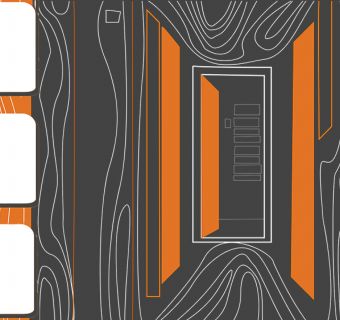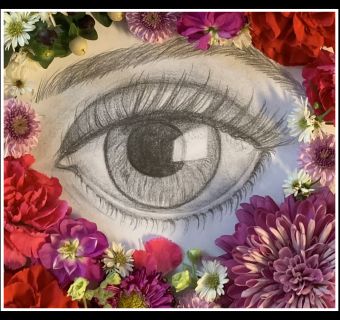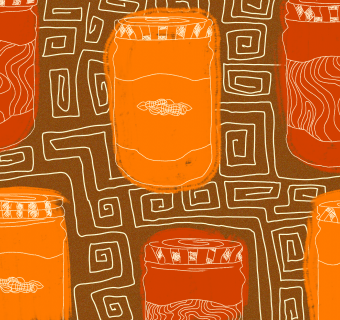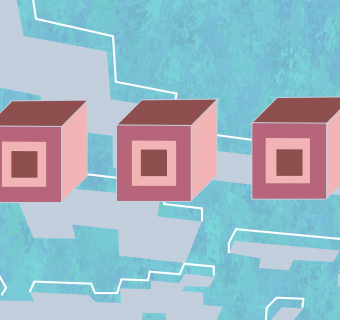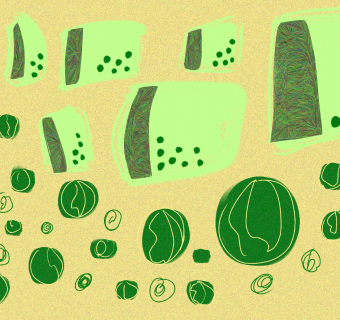Just a few weeks after its official release, Rihanna’s newest reggae-inspired collaboration with Drake off of her new album “Anti” has already made its presence in pop-culture as one of this year’s assured radio hits and club anthems, currently holding down the number 1 spot on the Billboard’s Hot 100 list. But this song and the music video that accompanies it are more than a catchy melody and an unoriginal narrative of two lovers who are attempting to define their relationship. Rather, it works (no pun intended) to expose a culture that is so silenced and hidden away from mainstream life that we can consider it to be practically “under ground”; a culture that exists not only in far away islands and cities but right here at UVA, too.
Produced by Boi-1da, a Kingston-born artist, “Work” undoubtedly features dance-hall inspired sounds and Caribbean vibes, similar to those portrayed in Rihanna’s previous hits “Rude Boy” and, notably, her very first studio album released in 2005, “Music of the Sun”. Born and raised in Barbados, Rihanna takes advantage of this colorful beat to linguistically and musically bridge the gap between pop and reggae, bringing Creole phrases like “meh nuh cyar” (I don’t care), “haffi” (have to), and most importantly, “work” (sex) to the radio.
And then came the video. Directed by Julien Christian Lutz, more commonly known as Director X, the video takes viewers into a dark, captivating Toronto nightclub that features partyers of all shapes and sizes. It opens with Rihanna dancing in a mirror, staring back at herself, giving the viewer the impression that despite the crowd in the room, he is actually interrupting an intimate moment. With her hands on her knees, she curves, twists, and throws her hips in every which direction. The camera then cuts to the background dancers, who are rolling marijuana, drinking beer, and dancing very sexually. Backs are arched, hips are thrust, knees are touching the ground, and walls are used for standing support. As described by Billboards, it “feels worlds away for many”.
The second part of the video is directed by Tim Erem, who created a living room studio set with entirely pink lighting, designed to simulate a basement-vibe. This half of the video is intimate, highlighting RiRi and Drake’s personal relationship. While equally great, this half of the video demonstrates an entirely different approach to the same song, emphasizing the two performers rather than the general sounds of the Caribbean and Caribbean culture.
In his production, Director X, who also directed Rihanna’s very first debut video for “Pon De Replay” in 2005, beautifully and authentically captures a community. It displays a culture that he and Rihanna are proud of and a celebration that is very real to many. When asked if Rihanna’s dance moves were free-styled, he explains, “This is just what happens when you get a bunch of West Indians in a room and play a record like “work,” no one has to tell anything about doing anything. You say “action” and everyone fills in the blanks themselves – they just go.” There is no choreography, no need for rehearsals, and no “acting”; it all comes naturally. He continues, “That is Caribbean culture at its height”.
However, fans have had a wide array of reactions, expressing everything from admiration of Rihanna’s apparent lack of bones, to disgust. So, what are some viewers failing to understand? The separation between dancing and sex. Many consider this style of dancing, commonly referred to as “wining” or “twerking”, as sexual simulation, and the dancers are often shamed for it. The assumption is that if a man and a woman are dancing in this manner, then they must be pursuing sexual relations. This could not be more wrong. As Director X attempts to break it down, he discusses a “battle of the sexes”, where both partners are competing for dominance.
Can she “throw it back”? Will she surprise him? Can he handle it? Will he fall over? And when the song ends, the two will talk, or just walk away. They can be dating, good friends, or absolute strangers; the point is, we don’t know. "Dancing and sex are tied together in America—if you're dancing with somebody that means you're sleeping with [them]. But that doesn't mean that in our culture it's the same. In West Indian culture, you're dancing with someone because you're dancing with someone. You're having fun."
When you think of college parties, or more specifically, UVA parties, you often think of large, historic fraternity houses, beer pong, and Taylor Swift. But I tend to think of something entirely different. I picture parties where you don’t have to dress a certain way or know a certain person to get in; you do, however, have to pay for entry, since the venue was rented out for the night. I picture dark basements blasting hip-hop and reggae sounds that you can hear from 2 blocks away. I picture walking in as a first year and finding no alcohol. I picture joining the array of bodies that move not to the beat of the music, but along with it as if they are one and the same. Women are stripped from the social pressures that constantly tell them to “be quiet and small” and men find themselves empowered by the surrounding colors, patterns, curves, and rhythms of cultures and ethnicities from around the world. Greeks step, hop, shimmy, and stroll; girls twerk; boys catch. This is my type of party, and it’s very, very real.
Members of the National Pan-Hellenic Council, Multicultural-Greek Council, Student Hip-Hop Organization, Student Organization of Caribbean Awareness, and the various others groups that host these parties represent growing (though still small) minority communities at UVA, who are disadvantaged by history and fighting to be heard; that is to say, they do not own large properties on Rugby Road, nor are they well-known by the majority. But the parties that are made possible by these communities create a safe space of expression and simply being; there is a shared sensation of escape and authenticity. The value of these organizations in educating and advocating for the minority experience is fundamental to the completion of the UVA that I know, although it may be different from the UVA that you’ve seen. Rihanna brings this basement experience to the main stage.
Rihanna’s video for “work” shines a flashlight into an often hidden reality, and attempts to make it mainstream. It allows the majority to escape into the unique world of the minority for three whole minutes. The value of this video is this: I’ve been to the big white houses, I’ve bopped my head along to Justin Bieber, and I’ve played beer pong. The question is, have you ever paid for, seen, or even heard of the underground basement party?


